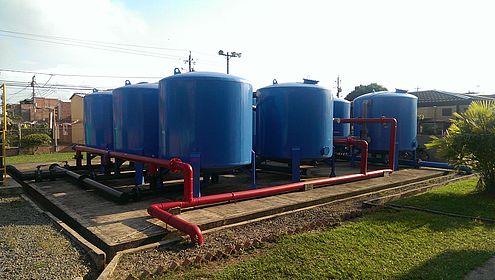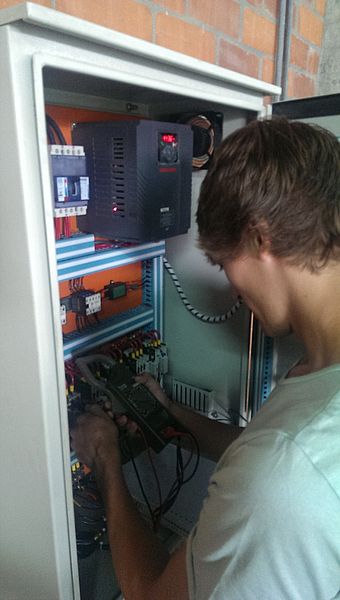Efficiency in a water supply system
Nick van den Berg and Nils van der Vliet, Colombia
As part of the study Civil Engineering at the TU Delft, we did a project as part of our minor. The TU Delft has connections with the university Univalle and their water research department CINARA in Colombia, in this way we were introduced to the project at Terranova Servicios.
The company Terranova Servicios is working on a better efficiency of the water treatment plant and the water distribution. The goal of the project is creating a better efficiency in the total water distribution system.
Terranova is a neighborhood in the city Jamundi in Colombia. The neighborhood is a government-subsidized neighborhood where a private company called Terranova Servicios supplies the water to the house. The company uses groundwater as source of the drinking water. A package treatment plant treats the groundwater to drinking water.
We started our investigation with a pre-research about possible energy losses in water distribution systems. In this review we looked into the possible reasons of what can cause energy losses. After the pre-research we made an overview of the complete system. This system overview gives a good idea where possible cost losses occur in the system. After this overview, some measurements in the system have been done. We did these measurements for two reasons. The first reason was to find out if there were losses in the system. The other reason was to obtain data for creating a model, which is based on correlations of these measurements. The model we then used to calculate what happens with the costs of the system after interventions. By comparing the results of the model we made a conclusion about the interventions in the system.
We found several points in the system that weren't functioning right or could be more efficient in another manner. We made new scenarios for the company they could run in their water supply, which leaded to a more efficient system. This was done in two parts. The first part was a recommendation in a form they could start right away without investment costs. The second scenario existed out of multiple interventions they could do, which involved some investment costs and a change in boundaries set in the system. Of course when investment costs are present it was necessary to give an estimation of the payback time to show if the investment would be profitable or not.
At the end of our investigation we gave a presentation to the University Univalle and the company we did the project for. Here we discussed and pointed out our recommendation, the total process and outcomes of our research in the system.
We are looking back to an amazing time in Colombia and we as well as the company Terranova Servicios are very pleased with our investigation.


